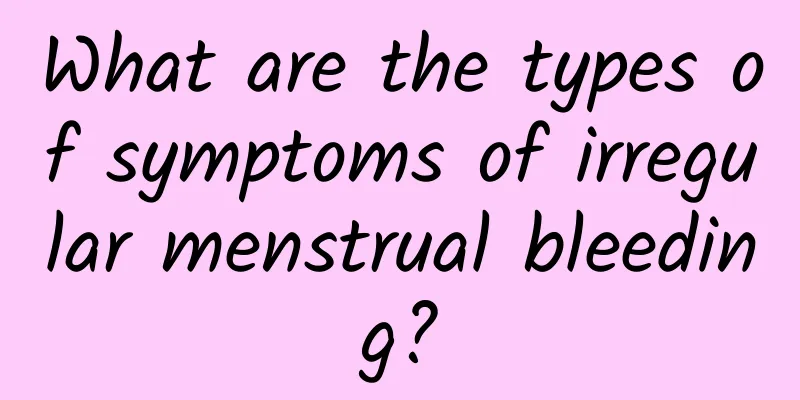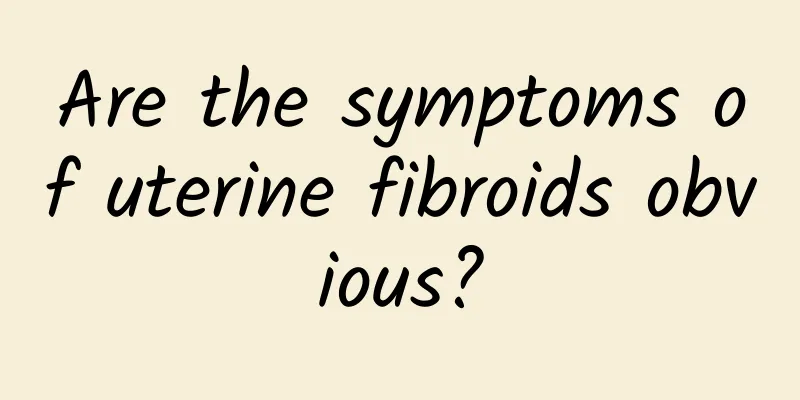Why do uterine fibroids sometimes disappear? Why do uterine fibroids sometimes disappear?

|
Why do uterine fibroids sometimes not In recent years, the incidence of uterine fibroids has gradually increased, causing trouble for many women. However, sometimes we also find that some women's uterine fibroids disappear after a period of time. This makes people wonder why uterine fibroids sometimes disappear? This article will explore from several aspects. We need to understand what uterine fibroids are. Uterine fibroids are a common gynecological disease, which are nodules formed by the abnormal proliferation of smooth muscle cells in the muscle layer of the uterine wall under inappropriate stimulation conditions. The main pathogenic factors include the influence of estrogen, genetic factors, and lifestyle habits. Why do uterine fibroids sometimes disappear on their own? We need to make it clear that uterine fibroids do not absolutely require surgical intervention. Sometimes, uterine fibroids may be small and asymptomatic, with no obvious impact on the body. In this case, the doctor may choose to observe and wait instead of actively performing surgery. Through regular examinations, the changes in the condition can be monitored. When the fibroids do not increase significantly or affect the quality of life, the doctor may postpone the surgery and give appropriate drug treatment to control its growth. Uterine fibroids may also shrink spontaneously under certain physiological conditions. For example, the proliferation of the endometrium and the secretion of progesterone during pregnancy can inhibit the growth of uterine fibroids, which is caused by the decline in estrogen levels. Therefore, during pregnancy, some uterine fibroids may shrink or disappear on their own. The decline in estrogen levels after menopause is also one of the reasons for the spontaneous healing of uterine fibroids. The development of uterine fibroids is also related to the endocrine balance in the body. For example, studies have shown that women with high estrogen levels and high BMI are more likely to suffer from uterine fibroids. Therefore, adjusting the diet structure, losing weight, and exercising can help maintain endocrine balance and reduce the occurrence of uterine fibroids. Although uterine fibroids are a common gynecological disease, not every woman needs surgical treatment. Sometimes, uterine fibroids may be asymptomatic or disappear on their own under certain physiological conditions. We should maintain our health and reduce the occurrence of uterine fibroids through regular checkups and adjustments to our lifestyle. At the same time, if uterine fibroids are found to have obvious symptoms, we should seek medical treatment in time to ensure good health. |
<<: What are the causes of uterine fibroids and what are the symptoms of uterine fibroids?
Recommend
Nocturnal vulvar itching
Nocturnal vulvar itching: Vulvar itching at night...
How to choose medication for endometriosis
Clinically, the incidence of endometriosis is inc...
Drink carrot and apple juice for breakfast to boost immunity and lose weight
Eating a good breakfast can not only make you ful...
What medicine can I take to get rid of the unclean abortion?
When the abortion is not clean, it is usually rec...
How should people with pelvic peritonitis take care of themselves in daily life?
Once pelvic peritonitis occurs, it will affect wo...
Teach women some tips to relieve dysmenorrhea
Dysmenorrhea is a headache for many women. Many w...
What tests should be done for cervicitis
Cervicitis examination Gynecological examination:...
Experts explain how to diagnose ectopic pregnancy
Diagnosis of ectopic pregnancy is the premise of ...
What are the symptoms of Bartholinitis?
Nowadays, gynecological diseases among women are ...
Experts teach you how to correctly prevent acute adnexitis
The incidence of acute adnexitis is very high amo...
Several common measures to prevent cervical erosion
There are many cervical diseases in life, and cer...
What should we pay attention to after abortion?
After undergoing abortion, patients need to pay a...
How to prevent premature ovarian failure
How to prevent premature ovarian failure? In orde...
How do women use drugs to treat cervical erosion? Analysis of the pharmacological effects of treating cervical erosion
The occurrence of cervical erosion is due to the ...
Liu Yifei's weight loss method in "The Story of Rose" has become popular on Xiaohongshu! Doctor: Adding "this cup" will be more effective
Actress Liu Yifei won the second place in the dis...









